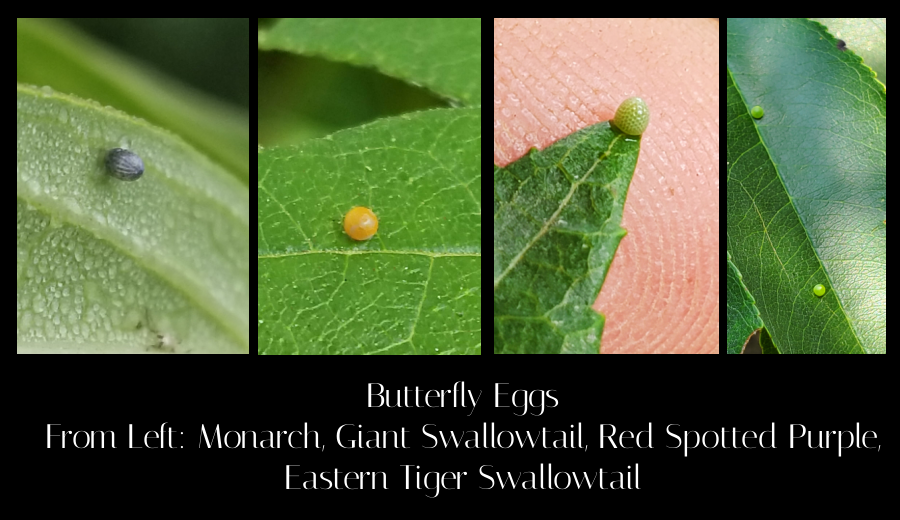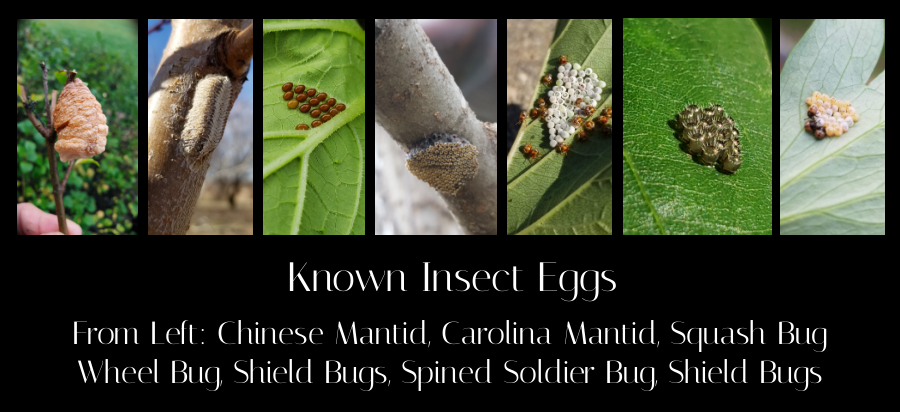What kinds of insect eggs can you find in the garden? During the summer months, I work a lot, from 6 to 5 every weekday. Where do I find the time for hunting bugs, insect eggs, and other things in the garden? Well, I spend most of my lunch period each day hiking woods and gardens, checking out all of the cool things God has left for me to find.
Insect eggs are hidden everywhere. This is because we have an abundance of insects in our woods, fields, prairies, and gardens. Can you imagine how many more we would have if we did not use so many chemical on our plants? Not only would we have more insect eggs, we would have more insects, and more birds and other wildlife which depend on insects for food.
Where to Look for Insect Eggs
Everywhere. I look everywhere. Under leaves, on twigs and branches, on bark, even in water. Insect eggs can be found anywhere. The real trick once you have found some, is identifying them. One of the things I like to do is watch butterflies when they are not on flowers. This usually means they are females getting ready to lay eggs. I spend a lot of time watching them lay their eggs so that I can photograph and remember their egg for next time, as well as to learn what plants they are looking for.
Some of the insect eggs you will find in field and garden will be laid in large masses. These are usually from shield bugs, but may also be sawflies or gregarious caterpillars. Some moth species lay their eggs in masses, because the caterpillars feed together that way.
Butterfly Eggs
Searching out butterfly eggs is a pastime for me. I would look more for moths, because I like moths better, but that would mean hunting them in the dark. And I might disrupt them if I look for them with a flashlight. So it is butterfly eggs for me.
But what do I do with them when I find them. Usually nothing more than to note the spot where they are laid. I have friends who will collect Monarch butterfly eggs and caterpillars to raise in a cage to finish out butterflies. This does prevent death by predation and parasitization, but it also disrupts natural ecosystems. We certainly have had a hand in the loss of habitat for Monarchs, but that does not give us the right to change their life cycle patterns.
Sometimes when I go back to see if an egg has hatched yet or not, I find that it has been parasitized by a wasp, or eaten by a bird. But most of the time it has hatched and a caterpillar is munching away on the foliage. Did you know that caterpillars eat their eggs after hatching? This way they get nourishment from the egg shell before chowing down on plant material.

Other Insect Eggs
Most of the insect eggs I come across are unidentified by me. I never know what they become or are. Some can be identified with books, but most are too hard to know, unless you collect them and let them hatch. Below are some of the more interesting eggs I have seen and cannot identify.

These eggs I do know. Praying mantids, assassin bugs, and some of the true bug species have eggs which are fairly well known and easy to identify. I could spend half my life just watching insects and learning the kinds of eggs each lays. But there is so much more to explore in the garden.

Conclusion
Insect eggs are everywhere, if you know how to look for them. I could spend so much time looking for eggs and waiting for them to hatch to see what they belong to. But there is so much more to see and explore out there. What will you explore for?
Happy planting!




